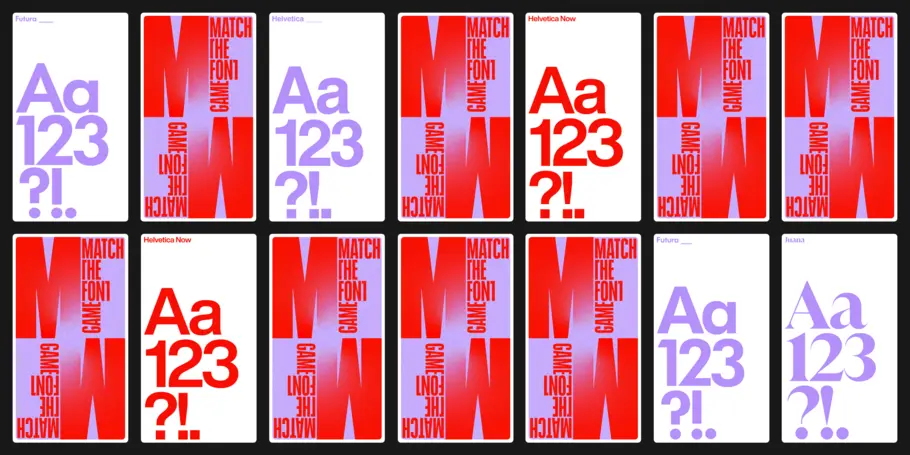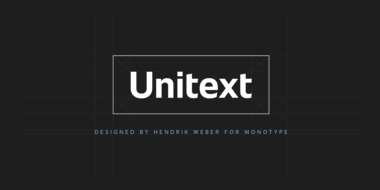Found some font inconsistencies? Here’s what to do next.

Fonts are the unsung heroes of brand identity. Of all the elements of a brand’s identity – including color, visuals, sound, tone of voice, and typography – typefaces are the one element that can represent your brand in the simplest, most stripped-down messaging and interactions, like an app menu or an invoice.
The best way to ensure continuity across all customer touchpoints is the consistent use of fonts for branding, but font inconsistencies are surprisingly common. That’s because there are so many points of failure; anytime a font file enters or exits your brand ecosystem, there’s a risk that the wrong font file is used.
If you’ve found font inconsistencies in your brand, or worry they might be lurking somewhere, don’t panic: You’re hardly the first. Let’s look at some common causes and the steps you can take to resolve them.
Common causes of font inconsistencies.
- Using different fonts in print and online. Desktop fonts have different licensing, use cases, and readability requirements than web fonts. A brand that developed its identity in an offline world (or even just in an offline-first world) may have chosen typefaces that don’t have web font equivalents, leading to the use of two different typefaces, online and offline.
- Switching between different weights or styles of the same font. Many fonts have a huge number of variations. Neue Helvetica, one of the most popular font families in the world, has 59 font weights – many of which have only subtle differences. It’s all too easy for an agency partner to use a Compressed Thin style instead of a Compressed Light style.
- Producing work in different languages. Brands that expand into new regions often need additional language support and new character sets, which isn’t always available within the established brand typeface.
- Inconsistent or insufficient font licensing. Without a well-considered font licensing strategy, brands can find themselves under-licensed for their actual font needs. Fonts are licensed based on use case; if you assume that a desktop license covers all potential usecases of the font, you will find yourself running afoul of your end user license agreement (EULA) when you use that font online, in mobile or web applications, or in shared server environments.
Who is at risk for font inconsistencies?
Some organizations are at a higher risk for font inconsistencies than others. If your brand lacks a clear approach and point of view on font acquisition and management, that makes it more likely that inconsistencies can slip into everyday workflows down the road. What’s the handoff procedure when employees resign? If there’s no plan, that makes it more likely that a new employee won’t have the background knowledge he or she needs to make the right font decisions. What’s the process for confirming licensing for commercial printers, vendors, and agencies? If there’s no process, your vendors might not have the right licenses in place, resulting in font substitutions or exposing you to potential legal risk if you are out of compliance with your EULA. Are agency partners responsible for purchasing fonts, instead of your organization? If so, your font acquisition strategy is no longer centralized, and mistakes could be made that are outside of your control.
Developing a clear font strategy is key to both avoiding and resolving a font inconsistency issue. It can feel overwhelming to try to corral a font problem that’s widespread, includes lots of unknowns, and may have been going on for a long time. But a methodical investigation and resolution is possible. Here’s the best way to get there:
- Thoroughly investigate and identify all inconsistencies. Document where they occur, who is affected by them, who had a hand in creating the inconsistencies, and why. It’s crucial to understand the scope of the problem before taking any actions to resolve it.
- Nominate a cross-functional team who will be fully accountable for font usage from now on. It’s best if this team includes someone who is invested in and deeply familiar with the creative vision, as well as someone who is more concerned with budgets and operations - typically, someone from the IT or Asset Management departments.
Building a team like this might be challenging, as it’s rare for people from such different areas of the company to work closely together. (According to Adobe’s 2022 Digital Trends report, only 33% of surveyed practitioners believe that their marketing and IT teams collaborate well enough to earn an 8/10 ranking.) It’s worth the effort, though. While a lack of collaboration between these departments can cause broader brand inconsistencies, a cross-functional commitment to the cause can have a far-reaching positive impact.
- Tackle the most damaging inconsistencies first. For many brands today, that means starting with digital-first experiences as they receive the most traffic from customers and prospects. If licensing gaps are a problem, investigate and resolve those fully. Compare your font usage to existing brand guidelines and reassess whether the guidelines truly reflect the day-to-day reality of your brand. Once you’ve examined the most important touchpoints, make your way through all other traditional font deployments, including labels, marketing communications, and internal documentation. This methodical process will map your entire font ecosystem, highlighting inconsistencies along the way.
- Develop a sound font procurement and deployment process to eliminate future problems. This step requires a shift in corporate mindset. Rather than thinking about fonts as a series of isolated purchases, your brand will need to consider fonts a strategic cornerstone of your branding and company operations.
The final step to eliminating font inconsistencies for good: employ a font management tool.
This is the best way to simplify the execution of a new procurement and deployment process. The right font management tool makes your life easier by automating user access to fonts, streamlining licensing, and syncing fonts with your creative team’s preferred programs. Centralizing font management within a single tool solves the problems that lead to inconsistencies in the first place, ensuring that those problems will not occur again.














